Behind the Scenes with the Maine Windjammer Association Captains
Every spring around April 1st the crew members of the Maine Windjammer Association vessels arrive, eager not only to sail but also to help ready the boats for a season of sailing. The docks start buzzing with the sound of orbital sanders and shop vacs. There’s a camaraderie among the crew and captains that brings excitement to the air.
It takes at least a month for the crew to sand, prime, and paint or varnish every surface on deck under the protection of the winter cover. Below decks, the galleys and passenger cabins receive the same treatment. Outside, while the winter cover is on, the crew lays aloft to sand and paint the mastheads and tar the rig. Just like in old times the vessels still use a mixture of pine tar and linseed oil to protect the shrouds and stays from the elements.
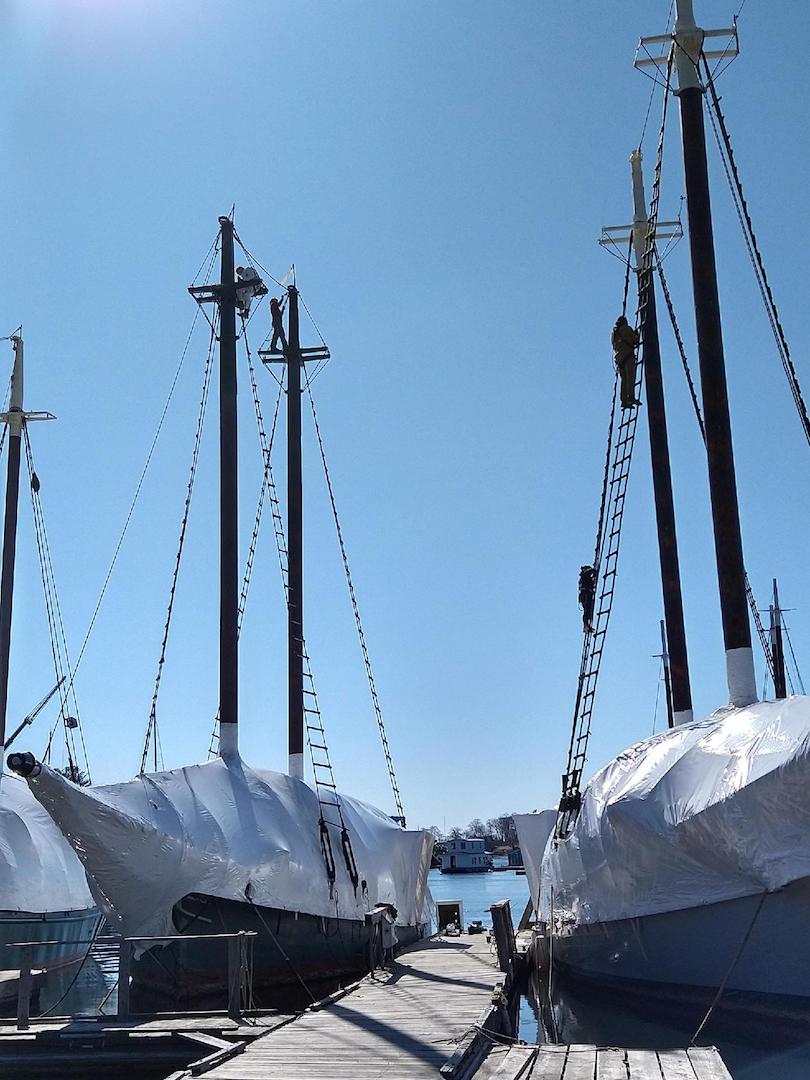
Tarring the masts while the winter cover is still on protects the deck.
In the shop, the work continues. The Shop is nearly as sacred to the Windjammer captain as his or her vessel. There, work can progress rain or snow or shine. There, in addition to table saws and block planes, you’ll find all sorts of schooner parts – rowboats, oars, blocks, lines, hatch covers, the list goes on.
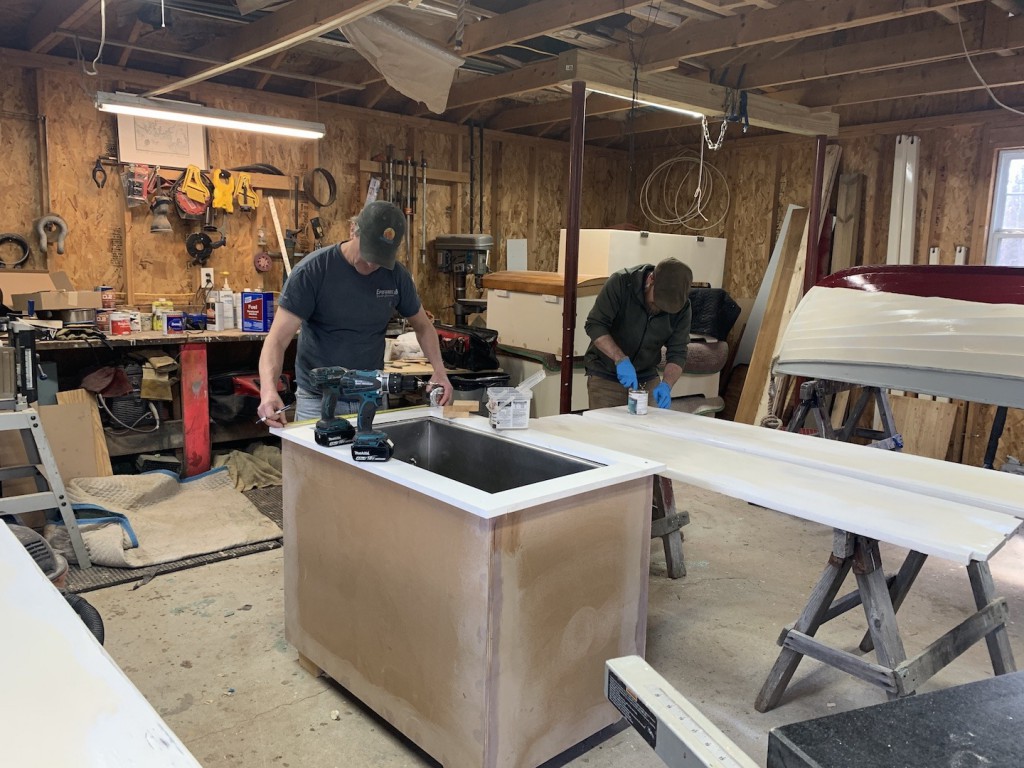
In the Angelique’s shop, Captain Dennis Gallant is rebuilding the passenger icebox as crew member John paints the seats of their rowboat.
Windjammer shops right now are also festooned with blocks (That’s nautical speak for a pulley!) A wooden block with steel inner parts – it is such a simple machine – yet so much work to keep in top condition. The blocks are inspected for wear and tear, the inner pin and sheave is greased, and the outside is varnished or painted. A vessel might have 40-60 blocks to help haul up sails, centerboards and small boats so the work really adds up!
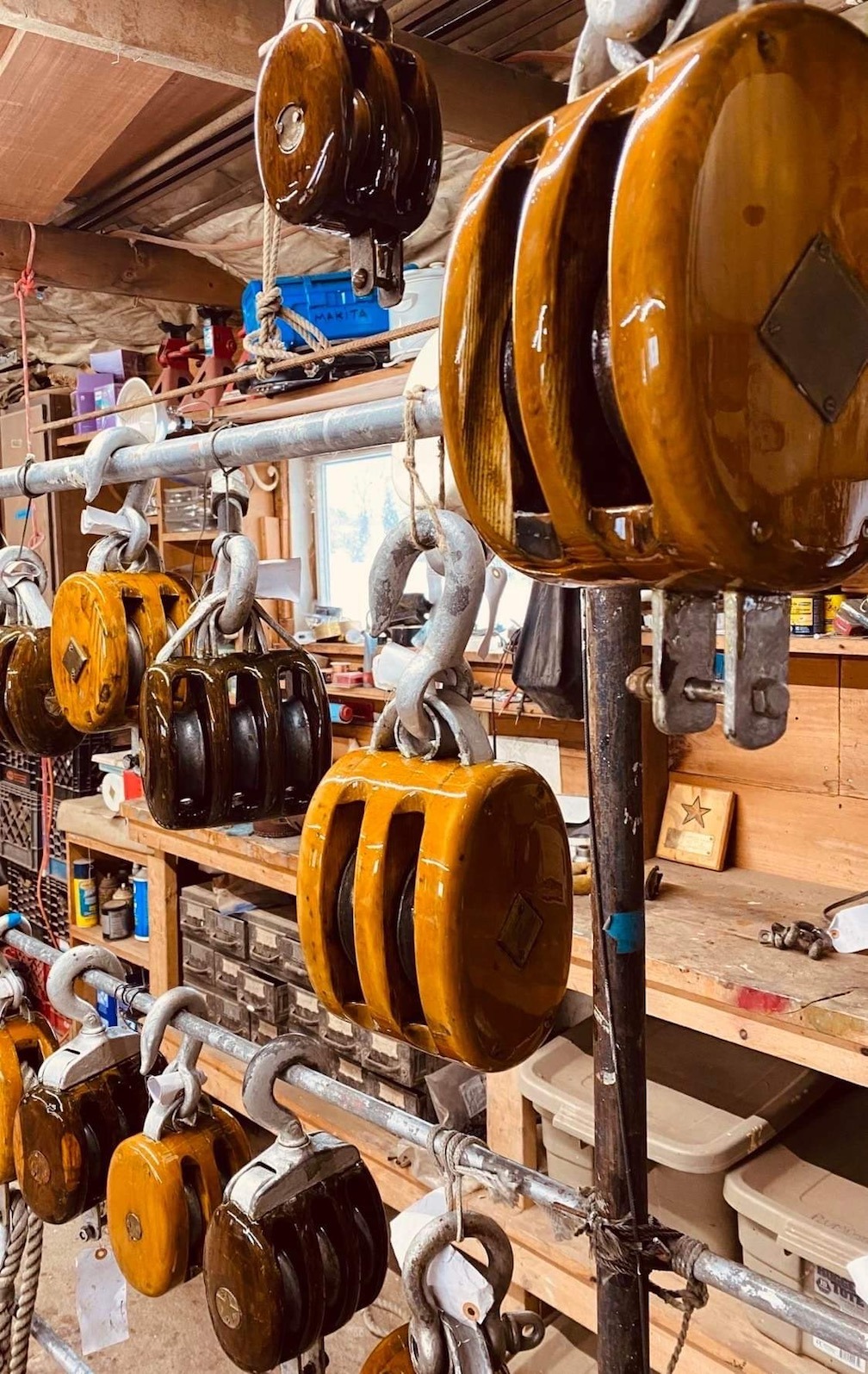
Captain Noah Barnes has the Stephen Taber’s blocks all hung for inspection and varnish.
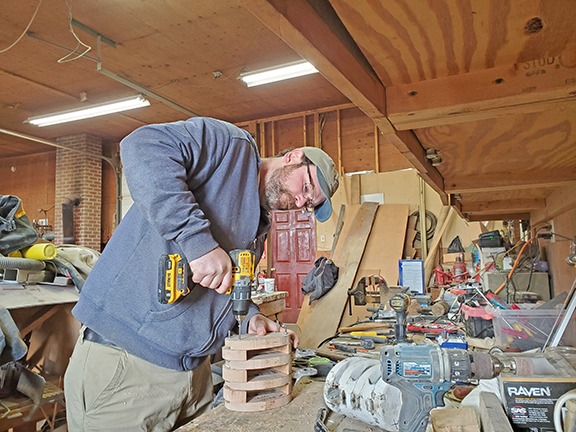
Captain Sean Grimes of Schooner Heritage constructs a new block out of oak. “Each block is an individual” says Grimes “Even if the blocks look the same in design and size, they fit together with the ironwork very specifically, so there is a lot of finicky custom work involved.”
Over in the Mary Day’s shop this winter, Captains Jen Martin and Barry King gave their yawlboat Arno some extra love and rebuilt her 70 HP diesel Yanmar engine. For the Windjammers without an inboard engine the yawlboat serves as a pushboat powering the schooner in light winds or when docking. They’re tough boats that can push a 100-ton schooner against heavy breezes but are comfortable enough to ferry guests to shore for shore excursions.
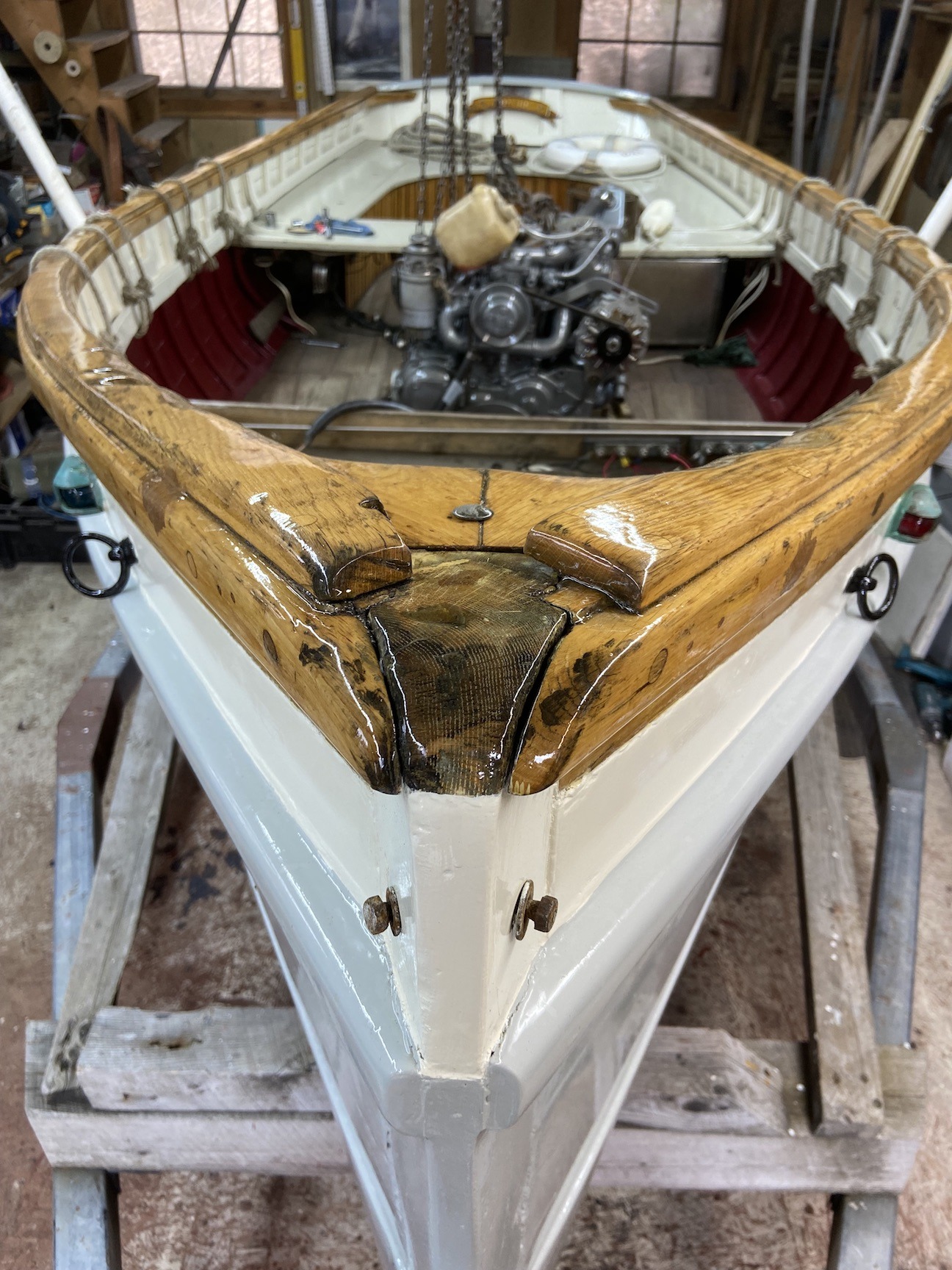
Mary Day’s yawl boat, Arlo
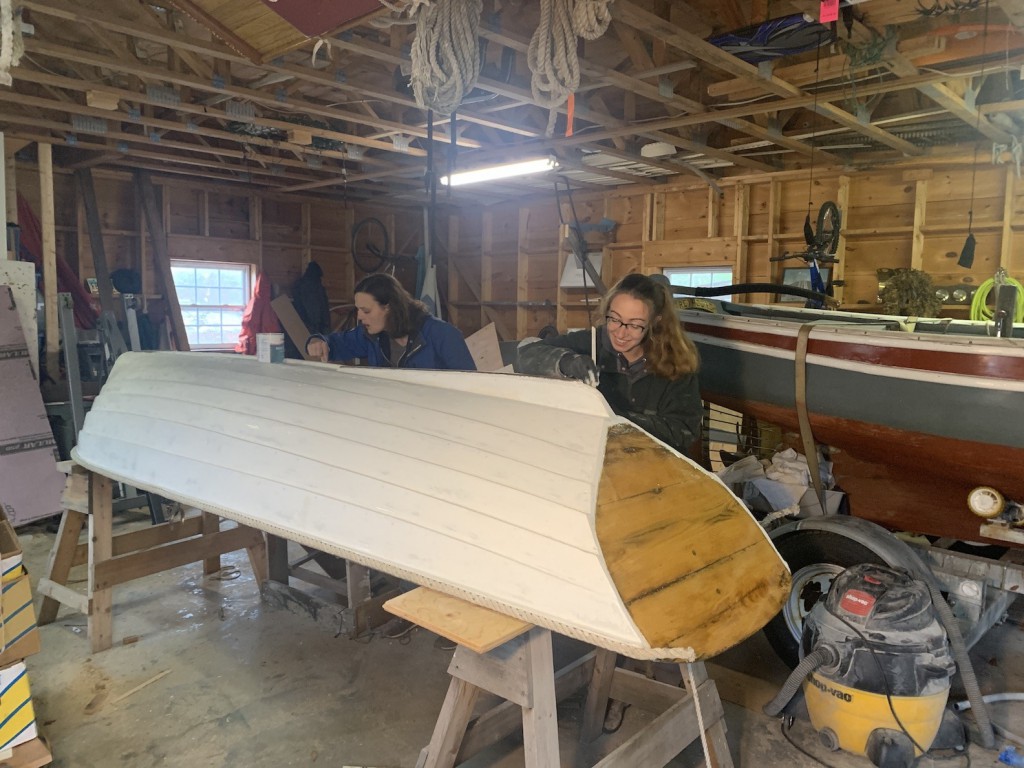
In the French’s shop, Captain Becky and First Mate Darcy putty the seams of their small rowboat. Windjammer guests can try their hand at rowing and many of these rowboats also have a sailing rig.
In early May the boats will be ready to unwrap and crews will turn to painting the hull, rigging the boats and bending on sails. Stay tuned for Fit-out part 2 in May!
Categories: Behind the Scenes, Maine Windjammers
Tags: maine sailing, Maine Windjammer Association, Schooner Heritage, Schooner Lewis R. French, Schooner Mary Day, Schooner Stephen Taber, Windjammer Angelique




